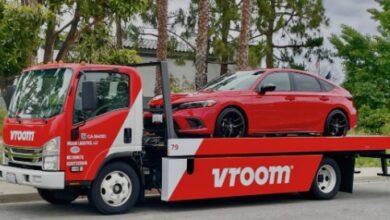Tesla Stock Analysis: A Decade of Financial Volatility and Innovation

Tesla has transformed the automotive industry, leading the shift towards electric vehicles (EVs). This article offers a comprehensive Tesla stock analysis by diving into the company’s Return on Equity (ROE) from 2013 to 2023. Understanding Tesla’s ROE is crucial for evaluating its financial performance, profitability, and potential future growth, especially for investors keen on Tesla’s stock.
What is ROE and Why Does it Matter in Tesla Stock Analysis?
Return on Equity (ROE) is a vital metric for assessing a company’s profitability relative to shareholders’ equity. It reflects how efficiently Tesla uses shareholder funds to generate profits. For anyone conducting a Tesla stock analysis, understanding its ROE is key to evaluating whether the company is delivering strong returns to investors. A higher ROE suggests that Tesla is effectively managing its capital, an important factor for both short-term and long-term stock performance.
Tesla’s ROE: A Rollercoaster Ride
Tesla’s ROE from 2013 to 2023 reveals the financial volatility the company has experienced. In its early years (2013-2014), Tesla’s ROE was deeply negative due to significant investments in scaling production, developing new technologies (like autonomous driving), and building out its global charging infrastructure.
By 2015, Tesla’s ROE began to improve, driven by higher sales and better cost management. However, it wasn’t until 2018 that Tesla posted its first positive ROE, thanks to the success of the Model 3 and stricter cost controls. The company’s ROE reached a high of 33.60% in 2022, signaling strong investor returns as a result of record-breaking sales and continued innovation.
Tesla Stock Analysis: Year-by-Year Breakdown of ROE Performance
- 2017: A Rocky Start (-18.13%)
Production issues with the Model 3 and rising operational costs led to a negative ROE in 2017. This period was marked by challenges that impacted Tesla’s profitability and stock performance. - 2018: Heavy Investments (-89.07%)
Tesla’s substantial investments in new factories and research led to a further decline in ROE in 2018. Despite the negative short-term impact, these investments positioned Tesla for future growth, making this a key moment in any long-term Tesla stock analysis. - 2019: Early Signs of Recovery (-15.10%)
Increased production and growing sales of the Model 3 began to improve Tesla’s financial outlook in 2019. This was an important year in Tesla’s recovery story, which many investors keenly followed. - 2020: A Leap to Profitability (4.80%)
2020 marked a turning point for Tesla, as the company posted its first annual profit, driving its ROE into positive territory. This year is critical in any Tesla stock analysis, as it signaled the company’s shift towards sustained profitability. - 2021: ROE Continues to Rise (21.10%)
Driven by strong demand for electric vehicles and new model launches, Tesla’s ROE jumped to 21.10% in 2021. Investors saw this as a major boost for Tesla stock, as profitability became more stable. - 2022: Record-High ROE (33.60%)
Tesla achieved record sales in 2022, driving its ROE to an all-time high of 33.60%. This impressive performance reflected Tesla’s growing dominance in the EV market and was a highlight for Tesla stockholders. - 2023: A Stabilization Phase (7.11%)
Economic challenges and increased competition slowed Tesla’s growth in 2023, leading to a normalization of ROE at 7.11%. Despite this, Tesla maintained profitability, showing resilience amid a tougher market environment.
Tesla Stock Analysis: What’s Next for ROE and Growth Potential?
As we look to Tesla’s future, several key factors could influence its ROE and stock performance:
- Innovation and New Models: Tesla’s upcoming models, including the Cybertruck, Roadster, and Semi, along with its advancements in energy storage, are expected to diversify revenue streams and contribute to higher ROE. These innovations are essential to consider when performing a forward-looking Tesla stock analysis.
- Expanding Production Capacity: New factories and expanded production lines will help Tesla achieve economies of scale, potentially lowering costs and improving profitability. This could lead to a stronger ROE in future years, benefiting investors focused on Tesla stock analysis.
- Software and Autonomous Driving: Tesla’s advancements in autonomous driving and software integration will likely enhance vehicle value, driving demand and profitability. Software has become a critical area of growth, impacting both Tesla’s stock price and ROE.
- Energy Sector Growth: Tesla’s energy products, such as battery storage and solar panels, provide additional revenue streams, contributing to long-term profitability and a stronger financial profile in the context of a Tesla stock analysis.
Tesla’s Vision, Strengths, and Challenges: Key Considerations for Stockholders
To conduct a thorough Tesla stock analysis, it’s essential to look beyond just financial metrics. Understanding the company’s vision, strengths, and weaknesses is crucial.
Tesla’s Vision: Accelerating the Shift to Sustainable Energy
Tesla’s vision is to accelerate the world’s transition to sustainable energy, focusing on electric vehicles, energy storage solutions, and solar energy products. This broader mission positions Tesla as more than just an automaker, making it a long-term player in the clean energy revolution.
Strengths for Stockholders to Consider:
- Innovation Leader: Tesla is the market leader in EV technology, battery innovation, and autonomous driving.
- Brand Power: Tesla’s strong brand resonates with tech-savvy consumers and environmentally conscious buyers, giving it a competitive edge.
- Vertical Integration: Tesla controls much of its supply chain, including battery production and its proprietary charging network, which improves efficiency and profit margins.
Weaknesses and Risks in Tesla Stock Analysis:
- Production Challenges: Tesla has faced recurring production delays, which can impact stock performance and investor confidence.
- Quality Control Issues: Reports of quality control problems have occasionally surfaced, posing a risk to customer satisfaction and long-term brand loyalty.
- Rising Competition: The electric vehicle market is becoming increasingly competitive, with traditional automakers and EV startups challenging Tesla’s market share.
Competitive Landscape in Tesla Stock Analysis
Tesla faces growing competition from both traditional automakers and newer EV companies. Key competitors include:
- Established Automakers: Volkswagen, Ford, General Motors, BMW, and Hyundai are all aggressively expanding their EV lineups, directly competing with Tesla.
- EV Startups: Rivian, Lucid Motors, Nio, and Xpeng represent significant competition in the luxury and truck segments.
- Chinese EV Manufacturers: BYD and SAIC-GM-Wuling are strong competitors, particularly in China, which remains a crucial market for Tesla.
Tesla’s Future Projects: Shaping Stock Performance
Several upcoming projects will likely have a significant impact on Tesla’s future stock performance:
- Cybertruck: Tesla’s much-anticipated electric pickup is expected to capture a large market share.
- Tesla Bot and Optimus: These AI-powered humanoid robots could open new revenue streams in industries beyond automotive.
- Dojo Supercomputer: Tesla’s Dojo, a powerful AI training platform, is set to enhance Tesla’s autonomous driving capabilities, further differentiating it from competitors.
Conclusion: Navigating Tesla’s Stock Performance in the EV Revolution
Tesla’s future is filled with opportunity, from innovations in autonomous driving to the expansion of its energy business. For investors conducting a Tesla stock analysis, it’s clear that the company’s ability to innovate and stay ahead of competitors will play a major role in driving its stock performance. With a solid ROE track record and strong potential for future growth, Tesla remains a key player in the rapidly evolving electric vehicle market.





